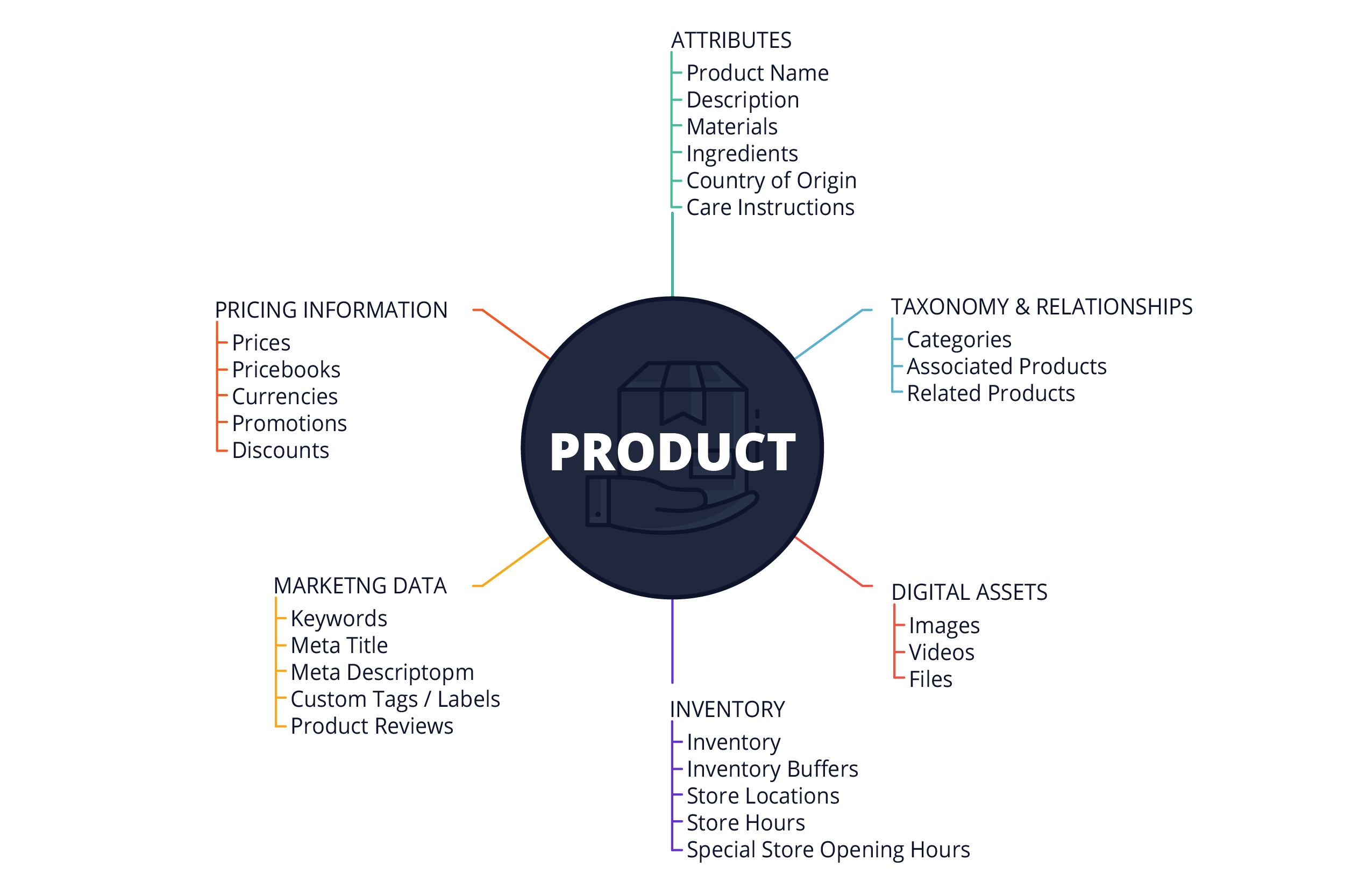What is Product Information Management (PIM)?
A PIM (Product Information Management) is a piece of software that stores and manages your product data. It is the backbone of an ecommerce operation and integrates with ecommerce platforms, marketplaces, sales & marketing channels, and other business systems to publish your product data across your entire ecommerce network. Product data is consolidated in a PIM solution, ensuring consistency across your network and a better product experience for your customers.
Legacy systems are often clunky and require costly and timely development. A more intuitive, SaaS-based model (such as Comestri) is more agile and user-friendly, making your job easier.
What is PIM software used for?
A PIM’s primary use is to manage different types of data. These can include:
- Technical data – including specifications on size, colour, material, weight, etc.
- Emotional data – including detailed product descriptions and imagery that facilitates emotional connections.
- Usage data – including descriptions of where, when and how to use the product.
Once this data is all in place, it can then be enhanced and enriched to enable better customer experiences based on factors such as geographical region, gender, use case or age to name a few.
How does a PIM work?
A Saas-based PIM, such as Comestri, give you a central repository of all your product data. Data is imported in, enriched and optimised, then exported back out to where it needs to go; ecommerce websites, product feeds, marketplaces and much more.
The best PIM for ecommerce stores your product data in a logical, structured format, making updates and automation easy. Product data is stored in the most intuitive way possible, making it easy to add new products, export products and sell more.

Why do we need a PIM?
A PIM has several benefits for any retailer managing over 1,000 SKUs.
Firstly, PIMs help companies to easily scale their product catalog into new markets and channels by acting as a single source of truth for product data.
Secondly, a PIM allows global teams to create specific product experiences unique to their region while maintaining the high quality of product information stored within their solution.
Thirdly, PIM tools give companies the power to rollout new products and seasonal collections to market much faster by streamlining the creation and enrichment process and breaking organisations out of the spreadsheets and into automation.
As well as the above, a PIM has very specific benefits to several key stakeholders within your ecommerce operations.

Ecommerce & Marketing Managers
- Create a uniform online product experience for customers in all channels and boost brand awareness with consistent messaging across all channels
- Increase revenue and build loyalty by delivering an exceptional customer experience
- Target different market segments and access new customers via different channels with product information tailored to specific customer needs
- Maintain consistent, current and accurate product information in a single central location, and reduce errors, duplicates and discrepancies by minimising manual re-handling of product data
- Ensure faster time-to-market for products and promotions

Executives
- Benefit from improved staff productivity due to less re-handling of product data, fewer data errors and automation of routine product management tasks
- Better visibility and reporting with consolidated data across all sales channels and suppliers
- Avoid high upfront technology costs, increased staff overheads and disruption to business processes with a SaaS subscription model
- Look forward to increased revenue, rising profits and lower operational costs

Merchandise & Visual Planners
- Control stock more easily using a consolidated view of inventory sources, and set inventory buffers to prevent stockouts
- Create rules that automate price generation
- Manage slow-selling or last-season stock through tactical sales
- Develop highly effective visual merchandising campaigns using rich and emotive product data like images, videos and persuasive descriptions

Customers
- Experience a better online product and brand experience across all channels, resulting in more repeat business and brand loyalty
- Less frustrations with having to return products that don’t meet expectations; robust, descriptive product data gives customers the information they need to make an informed purchase
Like to know more? Book a product demo or reach out today!


